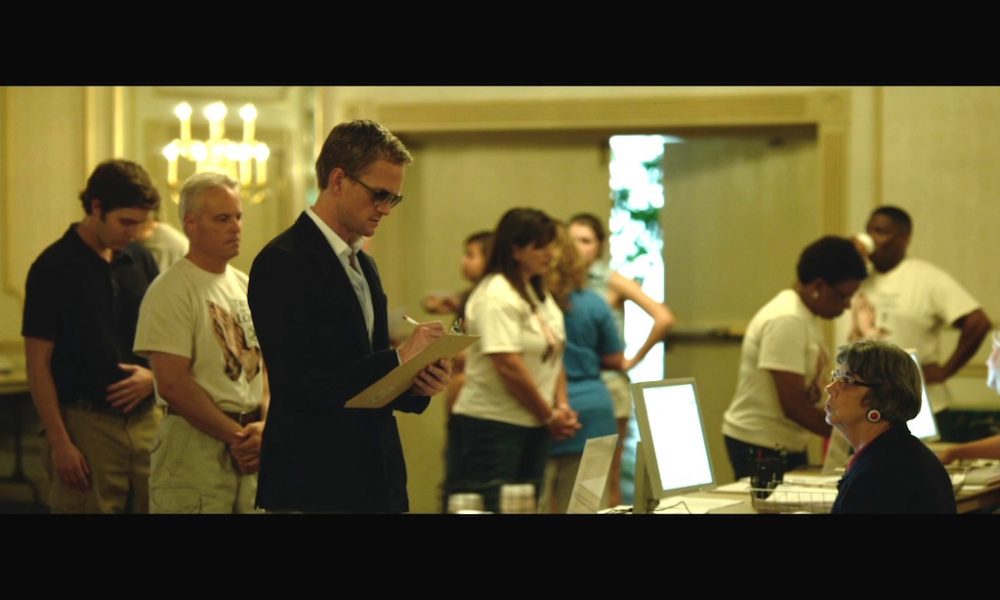Picture the X-Men as written by Ernest Hemingway. Blue lightning arcs from human flesh; spirits live, die and transmogrify; a debonair psychopath is ensnared by true love; a journalist struggles for truth in the Middle East; a writer runs out of ideas; soul carnivores devour the essence of innocents to live forever; Holly Sykes runs away from home; and the first apocalypse begins when we run out of oil and time. These events are played out over six parts, each with a new protagonist, all of whom orbit Sykes.
David Mitchell is best known for the strange and gorgeous Cloud Atlas (made into a movie by the Wachowski siblings). The Bone Clocks is his sixth book, and it continues to build on a fictional universe that Mitchell’s been weaving since his first novel. Each book stands alone but they share one world: familiar characters sometimes appear in surprising places, wandering from one text to the next and resonant lines repeat themselves in different contexts.
Mitchell’s lines are nearly perfect. His language feels inevitable and his metaphors are as striking as gems set in a granite edifice. He brilliantly unifies background description and theme, such as when a young man, Hugo Lamb, stands on a train reading Machiavelli’s Prince. He’ll be a businessman in a year, doomed to grind his life away for money that he’ll never have time to spend. Another train runs parallel with his. There’s a young businessman standing on it, exhausted, and reading a magazine touting get-very-rich-quick tips. That’s me in a year, Hugo thinks. He resolves to escape his path. The other man tries to look up, to see what Hugo is reading, but before he can, the tracks diverge and they’re swept into different parts of the world and different lives. The setting is never merely a setting. It exemplifies and plays out in subtle analogy of the themes and characters’ thoughts.
There are many themes and people in Mitchell’s books, just as in our lives. Mitchell delights his readers with the unexpected—fantastical parts of his realistic novels. They bring back much of the joy of reading, or playing games as a child. You feel as if anything at all could happen—anything that is possible to dream up. But even fantastical things are ruled by the same laws—if not of physics, then of human nature and chance that normal ones are. The end is difficult to bear, but Mitchell’s preoccupied with matters too grave and too big to be closed nicely. The book is his way of asking and trying to answer the question: can good people stand against monolithic conglomerates and, with small and valiant deeds, erode them?
Mitchell’s view of the future isn’t entirely hopeless. He brings us, at one point in his books, to humanity’s dying days: apocalypses have dessicated the planet, and people live in prehistoric villages and are hunted by armies of cannibals. It’s incredibly bleak but not everyone is dead yet, and that’s why it’s always exciting to see Mitchell’s next book. His knowledge and perception of human nature deepens with age and each book he writes and it will be interesting to see whether he thinks we’re ultimately redeemable or not.
A character in Cloud Atlas, Adam Ewing, is told: “The weak are meat the strong do eat.” But to this Mitchell contrasts individuals and small bands managing minutely heroic actions: a midwife returns to a carnivorous abbot’s temple prison to save a pregnant girl. A disgraced magistrate sacrifices himself to kill the near-invulnerable abbot. An android writes a treatise to oppose a totalitarian regime that she knows will kill her for it.
In The Bone Clocks, those soul carnivores don’t go unopposed; a ragged band of ageless spirits stands against them. And at the end of Cloud Atlas, with its labyrinthine structure, we return to Adam Ewing in the 1800s, who’s become an abolitionist, and who is told by his father-in-law that these small actions are futile, “no more than one drop in a limitless ocean,” to which Ewing replies “Yet what is any ocean but a multitude of drops?”




Comments are closed.